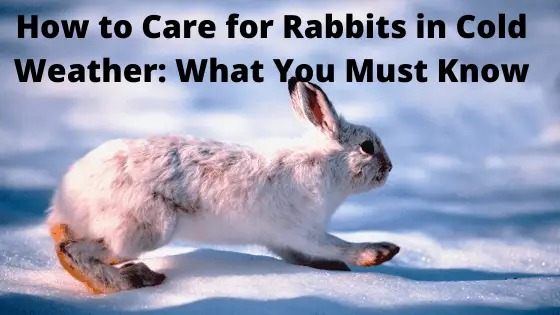As a general rule Rabbits do not tolerate extreme weather temperatures so you need to make sure their housing stays warm and comfortable and protects them from the elements. Rabbits do not hibernate, 1) Move hutch to secure location 2) More Food in cold weather 3) Raise the Hutch 4) Secure from Drafts 5) Make inside of hutch warm. 6) Straw 7) Blankets 8) Heating pad Be creative keep bunnies safe
Care for Rabbits in the Cold How can you Take care of Your Rabbits
Care for Rabbits in the Cold. Rabbits do not tolerate extreme weather temperatures so you need to make sure their housing stays warm and comfortable and protects them from the elements. Rabbits do not hibernate, so if your rabbit looks limp or sleepy and isn’t really reacting to anything then you need to get him to a vet. If you have just got a rabbit and he’s been kept indoors or is a baby, don’t put him outside until the weather gets warmer, as the sharp change in weather can kill him
Indoor house rabbits should be fine in the cold weather as the temperature indoors tends to be regulated for you! But check that their living area is not in a draught, and if temperatures drop very low during the night you could give them a Snugglesafe Heatpad (it’s like a pet-safe hot water bottle) for some warmth.
There are the following ways to keep warm your rabbits in the winter season:
Changes in Your Rabbit’s Body During Winter Months:
Rabbits will eat more in winter as they naturally think food will become scarce. The extra food also provides them with more fat insulation, but this alone does not keep them warm enough. Their fur coat will also get a bit thicker, but again this only helps them slightly and they will still rely solely on you to keep them safe and warm! Remember rabbits in the wild live underground in dry, draft-free burrows, snuggled up with warm groups of other bunnies!
Move the Hutch Somewhere Warmer:
If possible, bring your rabbits indoors for the winter, or move their hutch to an unused garage or shed. Do not put the hutch in the garage if you park your cars in there as the exhaust fumes are dangerous to them. If you have no shed or garage, move the hutch to somewhere sheltered such as by some trees, facing away from the wind.
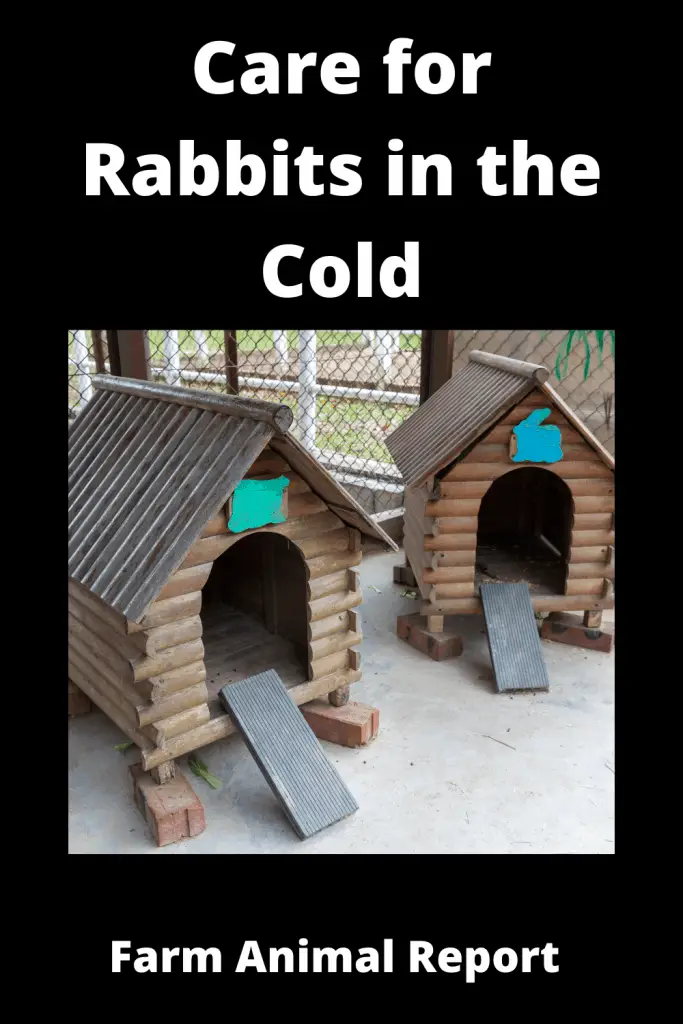
Look for Gaps in the Hutch Walls:
Check there are no gaps through which rain and wind can get in. make sure the wood isn’t damp or rotting, and reapply a rabbit-safe wood protecting coating every few years. You can also line the inside walls with newspaper. Drafts and the Chill Factors they can produce can be Fatal
You can also Read our Guide –18 Ways to Make Money by Rabbit Farming—Extensive Guidelines for Rabbit Farmers
Check the Roof
Reroof the hutch roof every few years if needs be, and cover with a plastic sheet or tarpaulin to stop the rain from getting in. put sheets of newspaper / Insulation/ foam, and a warm blanket between the roof and plastic sheet for added insulation, and let it hang down the sides and back as well as it covering the roof. You want it to stay Water Repellant, and insulated, to help keep bunnies warm.

Cover the Door with Clear Plastic Wrap
If your rabbit hutch has mesh doors, cover them in clear plastic wrap. This will allow your rabbit to see through the hutch doors while preventing air from entering. However, leave a small gap towards the bottom for proper ventilation. You cant make them airtight or you can suffocate your bunnies, so it needs to be able to breathe.
Make the Inside of the Rabbit Hutch Warm
- Rabbits need warm beds year-round, but especially in the winter. During winter, line the floor and walls of a rabbit’s bed with newspaper. This will help insulate the bed and keep your rabbit warm.
- Place a lot of bedding material in the sleeping area. You can dust-free hay as bedding. Avoid giving your rabbit a blanket in his bed. The rabbit may chew on blankets, which can cause intestinal blockage.
- When it comes to keeping rabbit warm, straw throughout the cage. Pack straw towards the edge of the hut, adding insulation, and place a bit of straw inside the rabbit’s sleeping area. Make sure to change straw every few days. Rabbits may urinate on the straw and you do not want your rabbit sleeping in dampened material.
- Blankets and fleeces are also useful for them to snuggle into or to line the floor with.
- Buy some cheap carpet samples for them to sit on ( make sure the edges are not fraying)
- Get a cardboard box, close all 4 sides, and cut a hole big enough for your rabbits to get through, and fill the box with hay. This will give them somewhere a bit more insulated to sit. If you have 2 rabbits in at once. Make sure they still have enough room in the rest of the hutch to stretch out.
- Buy them a Snuggle-safe Heat-pad. You warm it up in the microwave and it releases heat for a few hours, so you will need to reheat it a couple of times a day.
Recommended Hutch Size for Rabbits
The rabbit welfare association and fund recommend a hutch size no smaller than 6ft long and 2ft tall, as this gives most breeds enough space to hop about and stretch fully upright.

Partially Cover the Front of the Hutch/Mesh:
You can use clean Perspex or a plastic sheet over a large portion of the front of the hutch so your rabbits can still see out and the light will come in, but wind and rain can’t blow in. Be sure to leave enough room for fresh air to come in so your bunnies can still breathe!
You can also buy waterproof hutch covers. You must have a bedroom section in your hutch.
Raise the Hutch off the Floor
Raise your hutch by placing bricks underneath, or by attaching long legs. This will help to prevent damp from the ground affecting the bottom of the hutch, and also stop ground frost from freezing the base. It will also protect a hutch in an area that is likely to flood a little (obviously won’t protect from severe flooding). Ideally, rabbit hutches should be on long legs all the time to make it hard for predators to get near.
Water
Water needs to be regularly checked to make sure they are not frozen. It is often easier to use heated water bottles that can easily be plugged in to prevent freezing. Use caution when using water bottles, as the metal drinking mechanisms inside the tubes can freeze solid, preventing the rabbit from getting any water when they go to drink. Drinking enough water is vital to rabbits housed outdoors. If they are not drinking, they will not eat, and eating is what keeps their metabolism going and helps them stay warm enough. In temperatures of freezing or below, rabbits living entirely outdoors may benefit from a nest box or an edible hay structure designed for small animals.
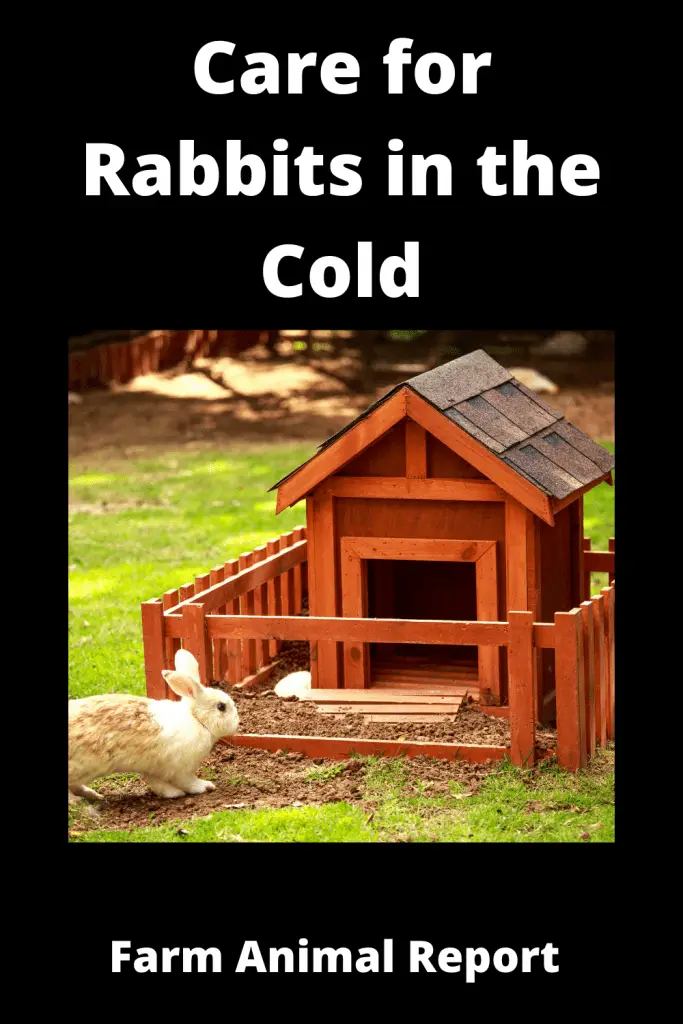
Give them Extra Food
Regulating their body temperature in cold weather takes more energy. Give your rabbits a little extra to help them stay comfortable.
Toilet Area
It’s important to keep this area clean as their urine can freeze and be very uncomfortable for them if left there. Bedding needs to be kept clean and dry and checked daily. Sitting on wet bedding can make them ill.
Keep Your Rabbits in Pairs
If you have more than one rabbit, try to keep them in pairs over the winter. This will both provide socialization and help keep your rabbits warm. Rabbits can snuggle with one another in the winter months for heat.
- If you haven’t introduced rabbits to each other, take some time with the introduction process before winter. It may take a while for rabbits to get comfortable with one another. Make the first introduction in neutral space, like a room in your home. Rabbits are territorial and throwing them in a cage together right away can be a disaster.
- Keep your rabbits in eye contact with each other when they are not interacting. Once they seem comfortable with one another in a neutral space, you can try caging them together for short periods. Eventually, you should be able to move your rabbits into the same cage for the longterm.
- Some rabbits may simply not get along, even with your best efforts. If your rabbits continually fight, it’s better not to cage them together. If rabbits get aggressive or territorial, they could injure one another.
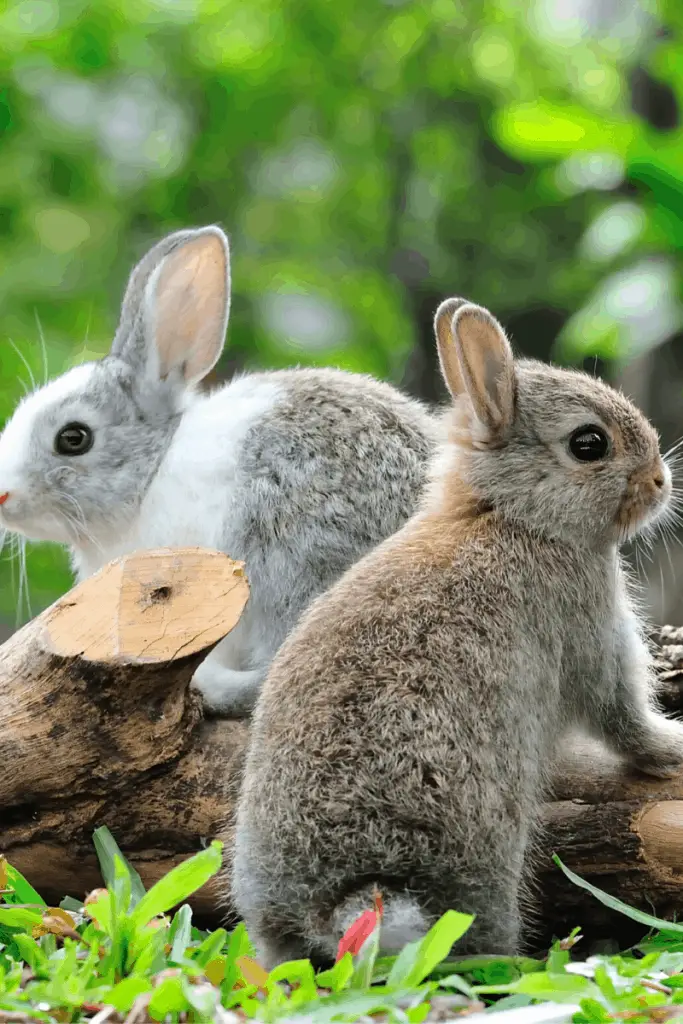
Be Careful with Heated Blankets
Many pet stores sell heated blankets to keep rabbits warm during the winter. If you choose to use these, practice extreme caution. Do not leave your rabbit unsupervised with an electronic blanket. There’s a risk of electric shock if a rabbit chews through the cords. They could also potentially cause a fire if left near hay, newspaper, or flammable material.
Keep Baby Rabbits Indoors:
A baby rabbit’s body temperature needs to be around 100 degrees F. It’s nearly impossible to keep a baby rabbit adequately warm outside during the winter. If you have babies, you must keep them inside for their safety.
- The first 10 days of a rabbit’s life are especially crucial. If the temperature is below 50 degrees, it’s very difficult for a baby rabbit to stay warm enough to survive.
- It’s a bad idea to let rabbits breed during winter. However, if your rabbit ends up having babies in the winter months, you should bring the mother and babies indoors.
Exercise
It’s vitally important rabbits exercise daily during the colder months. A hutch attached to a safe, covered exercise run will allow them to shelter in the hutch or exercise in the run when they please (rabbits are most active at dawn and dusk). It’s not acceptable to keep them locked up simply because you are unable to provide a protected exercise area for them.
Just remember to:
- Ensure at least part of the run is dry and sheltered.
- Provide as many hiding places as there are rabbits so they can escape if they feel afraid.
- Give them safe toys to play with to avoid boredom.
- Provide regular opportunities for them to play with other friendly rabbits.
- Rub your rabbit dry with a towel if they get wet.
Watch for Signs of Health Problems
With proper precautions, your rabbit should be safe and healthy over the winter months. However, be on the lookout for the signs of health problems. If your rabbit has a cold or respiratory problem, he should be evaluated by a vet and kept indoors. Watch the following:
- Discharge from the nose
- The appearance of dirt around the nose
- Discharge from the eyes
- Loud breathing
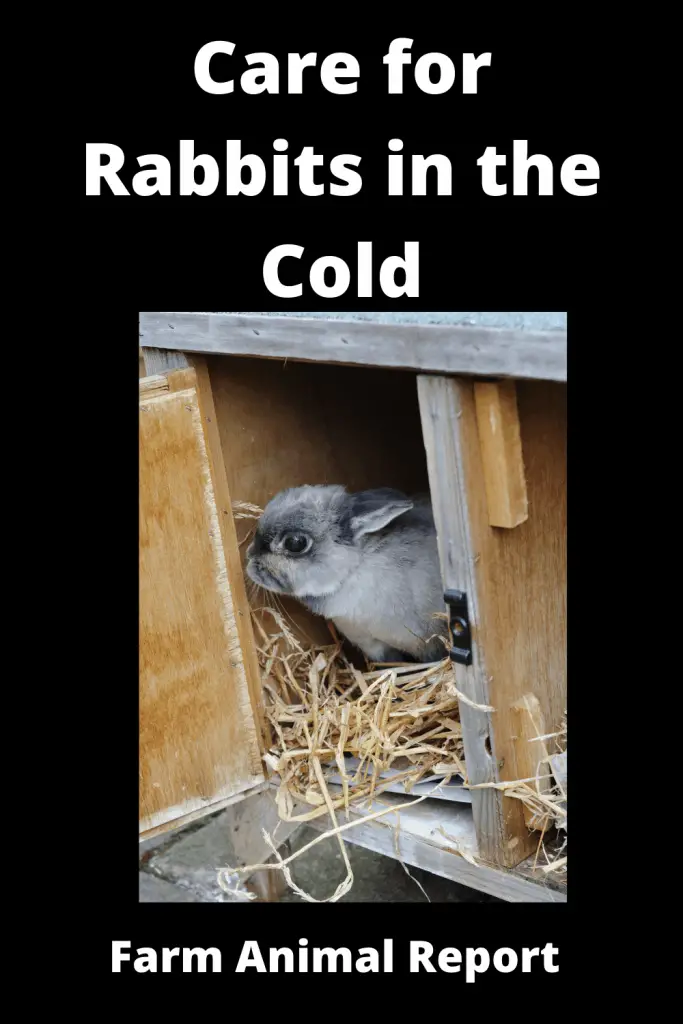
Outdoor-only Housing
Rabbits can live outside entirely, this is the good news for rabbit owners. Two things should be managed then rabbits can live outside, these are: you should keep protecting your rabbits from wind and you should always keep your rabbit dry. With these two precautions, these animals can thrive in very cold weather.
Despite the cold weather, rabbits still require proper ventilation, such as provided by the all-wire cages.
It is important if rabbits are housed solely outside, that there be at least three of the four sides of their housing protected from the outside elements. This could be more permanent hutch-type housing, such as wood or metal surrounding the cages, or something less permanent, such as tarps or plastic sheeting.
Regardless, it is important to make sure that the rabbits are unable to reach the outside material and chew on it. Pressure-treated wood and plastic can permanently damage a rabbit’s digestive system. As rabbits are prey animals, it is also recommended that a tarp or canvas be covered at night, to preserve warmth, and to protect them against potential predators.
Water needs to be regularly checked, to make sure they are not frozen. It is often easier to use heated water bottles that can easily be plugged in to prevent freezing.
Use caution when using water bottles, as the metal drinking mechanisms inside the tubes can freeze solid, preventing the rabbit from getting any water they go-to drink.
Drinking enough water is vital to rabbits housed outdoors.
If they are not drinking, they will not eat, and eating is what keeps their metabolism going and help them stay warm enough.In temperatures of freezing or below, rabbits living entirely outdoors may benefit from a nest box or an edible hay structure designed for small animals.
Rabbit Breeder Associations
| Rabbit Association | Location | Link |
|---|---|---|
| American Breeders Association | United States | ARBA |
| House Rabbit Society | California | HRS |
| Ohio States Rabbit Breeders Association | Ohio | OSRBA |
| Livestock Conservancy | North Carolina | LC |
| Rabbit Welfare Association and Fund | United Kingdom | RWA |
| British Rabbit Council | United Kingdom | BRC |
| European Association of Rabbits.... | Europe | EAP |
| Australian National Rabbit Council | Australia | ANRC |
| Australian Rabbit House Society | Australia | ARHS |
| ARBA - Rabbit Shows | United States | ARBA - Shows |


